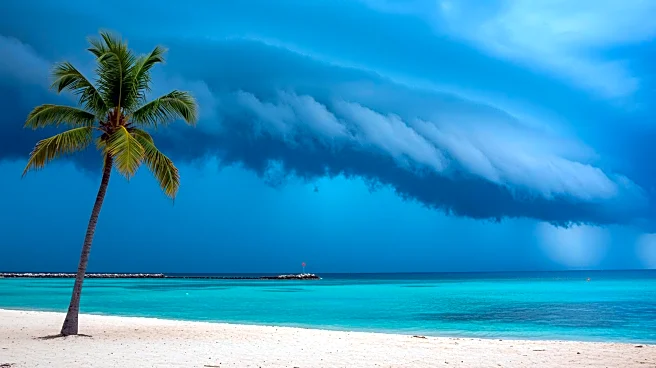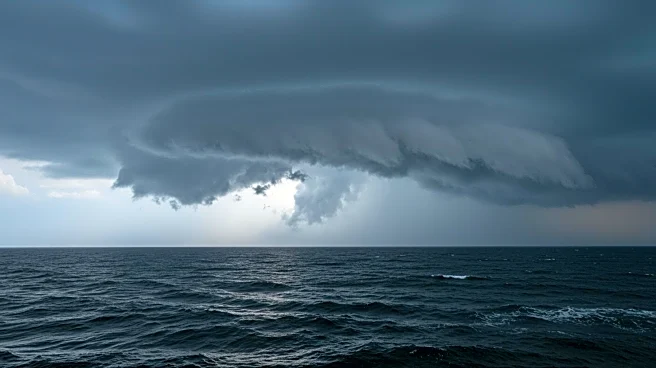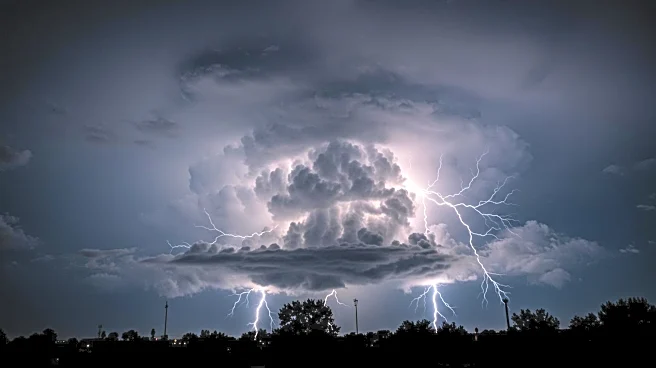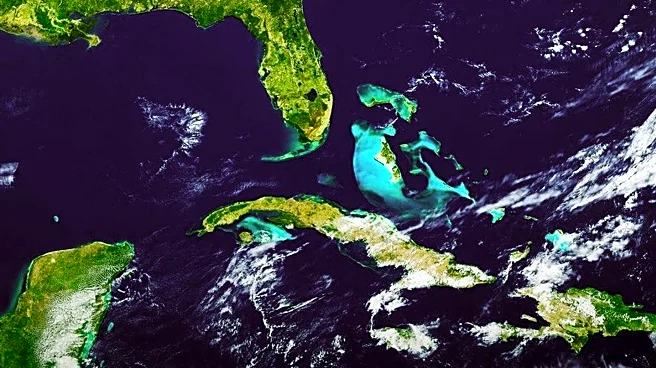What is the story about?
What's Happening?
Tropical Storm Erin is forecasted to strengthen into the first hurricane of the Atlantic season by Saturday morning. While the storm is not expected to directly impact the U.S., it will bring dangerous rip currents to the East Coast. Puerto Rico is anticipated to experience a high risk of rip currents over the weekend and into early next week. East Coast beaches will face rip currents from August 21 to August 27. Rip currents, which flow out toward the ocean, can quickly pull swimmers away from the shore. These currents typically reach speeds of 1 to 2 feet per second, but can accelerate to 8 feet per second, faster than an Olympic swimmer. The National Oceanic and Atmospheric Administration (NOAA) advises swimmers to remain calm if caught in a rip current, flip to their back, and float to avoid exhaustion and drowning.
Why It's Important?
Rip currents pose a significant threat to beachgoers, especially during peak summer months when beaches are crowded. Understanding the dangers and safety measures associated with rip currents is crucial for public safety. The presence of rip currents can lead to increased rescues and potential fatalities, impacting local emergency services and lifeguard operations. The warnings serve as a reminder for beachgoers to be vigilant and informed about water conditions before swimming. This situation underscores the importance of having lifeguards present and highlights the need for public awareness campaigns about ocean safety.
What's Next?
As Tropical Storm Erin progresses, monitoring its path and strength will be essential for coastal communities. NOAA and local authorities will continue to provide updates and safety advisories. Beachgoers are encouraged to check water conditions and heed warnings from lifeguards. The storm's development into a hurricane could lead to further advisories and potential impacts on marine activities. Authorities may increase patrols and safety measures at affected beaches to ensure public safety.
Beyond the Headlines
The occurrence of rip currents due to tropical storms highlights the broader implications of climate change and its impact on weather patterns. As ocean temperatures rise, the frequency and intensity of storms may increase, leading to more hazardous conditions for coastal areas. This situation calls for enhanced preparedness and adaptation strategies for communities vulnerable to such natural events.
AI Generated Content
Do you find this article useful?











